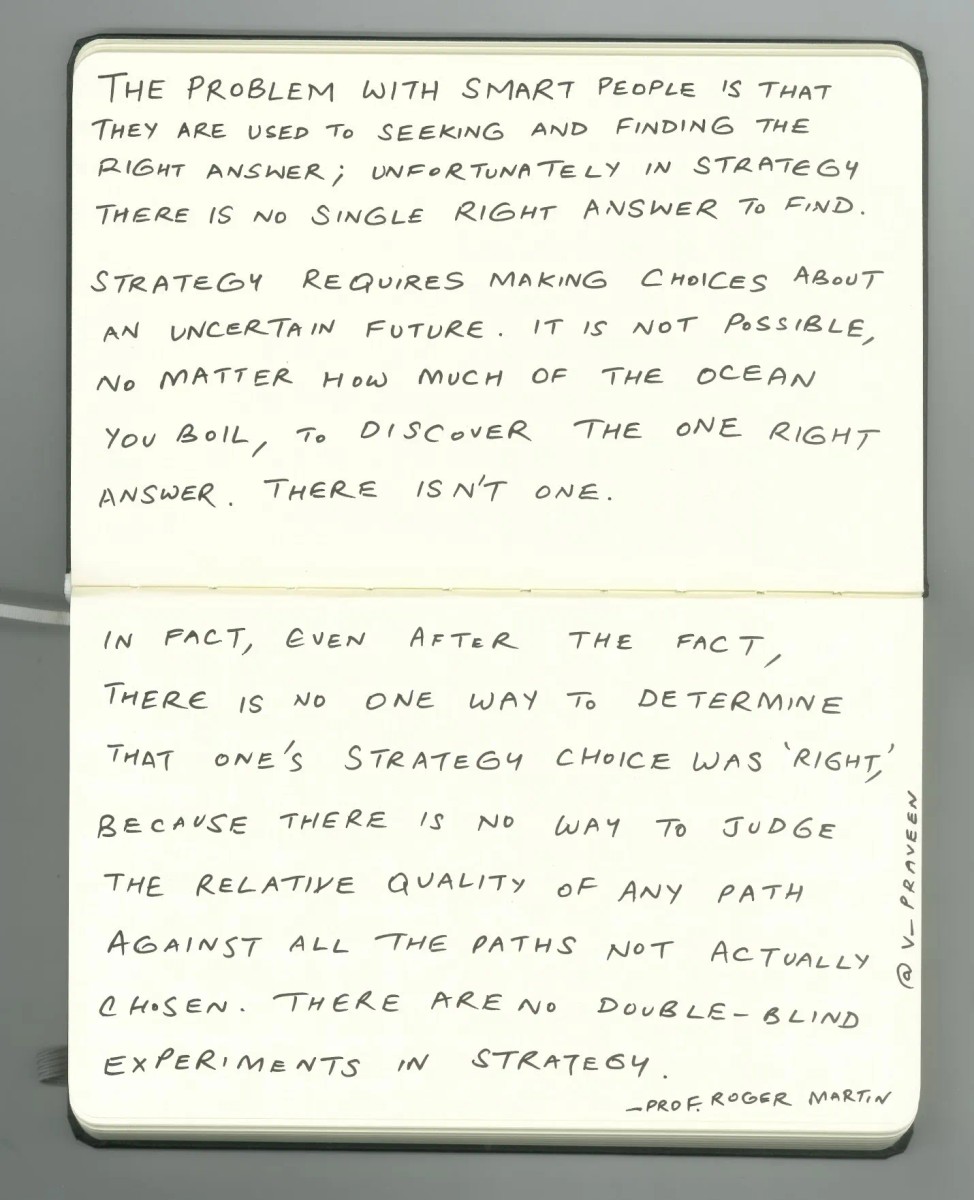Effective strategy emerges out of an exploration of challenges, ambitions, resources, and competition. By confronting the situation actually being faced, a talented leader creates a strategy to further some elements out of the whole bundle of ambitions.
Richard Rumelt • The Crux: How Leaders Become Strategists
It is often said that a strategy is a choice or a decision. The words “choice” and “decision” evoke an image of someone considering a list of alternatives and then selecting one of them. There is, in fact, a formal theory of decisions that specifies exactly how to make a choice by identifying alternative actions, valuing outcomes, and appraising
... See moreRichard Rumelt • Good Strategy/Bad Strategy: The difference and why it matters
The thing about smart people is that they tend to think that if they think really hard about something, they might figure it out, when the truth is, in strategy (and life in general), there is never one right answer.... See more
Strategy requires making choices about a future that is not yet known. I’m one of those people that tends to over-intellectualize
